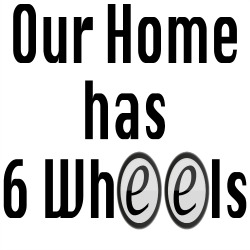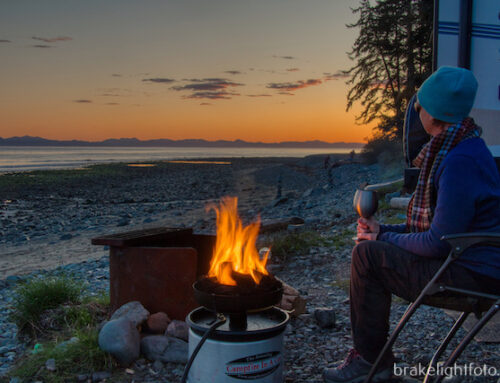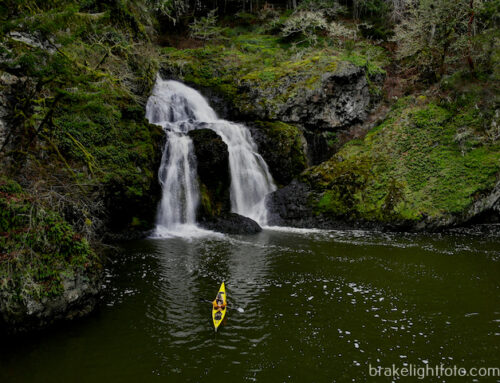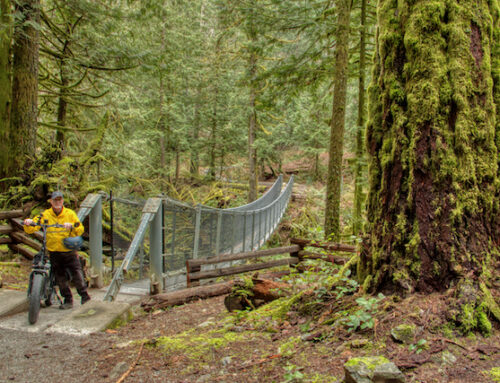Iceland – Akureryi via Husavik to Mývatn Day 5
Once again we began our morning at Lamb Inn with the continental breakfast, but today they also put out an amazing homemade cake with layers of cake, jam, chocolate and icing! Amazing! I’m not one to eat things like this for breakfast, but hell, I had to try it, right?
The wind from last night hadn’t abated so we literally got blown towards the car and tried to get in without having the doors ripped off. Here’s a couple of hot tips for visiting Iceland. 1) Don’t ever let go of your car doors! 2) Never open both your doors at the same time unless you actually want to clear out all the junk in the car!
Husavik
On our way to Mývatn we had planned a slight detour north to the village of Husavik on Skjalfandi Bay, about 45 miles from Akureryi. Husavik like Hofsos, is a very picturesque and colourful ocean-side village. However, Husavik is much larger with a lot more services and a population closer to 2,300.
Originally, Husavik was primarily a fishing village, but it has become a center of whale watching in Iceland due to the number of different species of whales that frequently enter the Skjalfandi Bay. The Icelandic word Skjálfandi literally translates to trembling which may refer to earthquakes in the area. Humpback, blue, minke, and northern bottlenose whales swim in the waters here, but there are also orcas, white-beaked dolphins, and porpoises. Húsavík is actually known for being the whale watching capital of Europe, with many operators boasting a 100% success rate in sightings over the summer. The Húsavík Whale Museum is located in the town center by the harbour.
Husavik harbour was very busy with several whale watching companies gearing their clients up in foul weather gear and getting them ready for their adventures. Seeing their expressions, feeling the wind and looking at the white caps whipping across the bay we’re thinking “better them than us”! We’re not actually into chasing whales around anyway. Fundamentally it is not something we agree with, though we see the value that it has brought in protecting whales and helping the economies of these small communities. This is particularly important in Iceland where whale hunting is still a ‘thing’. Whale watching companies are definitely at odds with whale hunters, and with growing tourism and an increasing interest in seeing whales for their awesome beauty and not as a meat supply, it will hopefully one day put an end to Iceland’s whale hunting.
We walked around the harbour for quite a while checking out the sights and taking lots of pictures. On the way out of town we stopped for a coffee and pastry at a local gas station with the usual cafe/convenience store attached. The coffee and pastries were awesome! They had automatic espresso machines and the pastries were as good as any you would get at a bakery!
From Husavik we headed southeast crossing a high plateau towards Mývatn. It is amazing how stark and barren some of these areas are, yet stunningly beautiful! As we drove further south we could begin to see Mývatn Lake in the distance and the distinctive volcanic mountains rising around it. When we first heard we were staying in Mývatn we thought it was a town, but it is not. It is just an area which includes the lake and surrounging countryside. There is really only one small village located in the Mývatn area.
Námafjall Geothermal Area – Hverir
Our check-in at the hotel was not until later in the afternoon, so we had some sightseeing to do before then. We carried on to the west side of the lake and headed to the Námafjall Geothermal Area, also known as Hverir.
This is a totally desolate looking area at the base of the Namafjall volcano. There is practically no vegetation due to the acidity caused by the geothermal processes, so the landscape looks more like Mars than Earth. There are lots of smoking fumaroles and boiling mud pools and mud pots, surrounded by sulphur crystals of different colours. The sulphur gives the area a pretty distinctive smell of rotten eggs.
Of course, the wind was blowing around 55 kph (34 mph) and the steam coming out of the vents was blowing sideways! It was pretty gnarly walking around. In fact Linda was finding it too difficult, so she eventually headed back to the car. I continued on to check a few more things out before retreating back to the car with grit in my eyes. Curse you Viking gods!
Krafla Viti Volcanic Crater
We then headed up to the Krafla Viti crater. This crater was formed in 1724 by a massive eruption. This explosive eruption lasted for five years and was called the Mývatn Fires. Apparently plumes of lava shooting into the sky were said to have been visible as far away as the the south coast! The diameter of the crater is around 300 meters (984 ft) and is filled with aqua blue water. The vivid colouration is due to bacterial growth and elements brought up from the geothermal activity in the area.
On the way up to the crater we drove past the Krafla Goethermal Power Plant. Today, 99 percent of Iceland’s electricity is produced from renewable sources, 30 percent of which is geothermal and the rest is hydroelectric. On top of the ridge looking down into the valley where the power plant sits, I pulled out my anemometer. The winds were blowing a steady 65 kph (40 mph) and were gusting to 97.7 kph (60.7 mph)! I was thinking of waiting around to see if it would break 100, but f*ck that!!
Mývatn Nature Baths
We had booked ourselves in at the Mývatn Nature Baths, located on the opposite side of the Namafjall volcano from the geothermal fields. The lagoon itself is man-made. The milky blue water in the lagoon comes from the Bjarnarflag Geothermal Power Station on the other side of route 1 from the nature baths. The water has a temperature of about 130°C when it arrives in the huge basin beside the lagoon forming an impressive man-made hot spring. The water in the soaking lagoon though, averages between 36 – 40°C. The water contains a large amount of minerals and is quite alkaline. Due to its chemical composition, undesired bacteria and vegetation don’t thrive in the lagoon making chloride or any other disinfectant unnecessary.
Since the winds were still blowing at 55 kph (40 mph) we wimped out on getting in the water. No matter how inviting that water looked, nor how warm it was supposed to be, we were not about to wander out there and sit with the winds howling straight across the lagoon – been there done that (See post on Blue Lagoon)! Instead we treated ourselves to a coffee in their very pleasant and wind free cafe where we could sit overlooking the lagoon and laugh at the gods! Which may not have been the best idea I suppose as the Viking gods will always find a way to get you some other way!
On the way to the hotel, we stopped at another man-made lagoon created by the local geothermal power plant. There were some Whooper swans (also known as the Common Swan) swimming in the milky blue water. Beautiful! Even swans like a nice day at the spa!
We drove back down route 1 towards Mývatn Lake and Reykjahlíð, located at the east end of the lake. It is the only real village in the area. There are some basic amenities such as a gas station, bank, mini supermarket, health care centre, school, swimming pool and a hotel. There are also some cafés, restaurants and guesthouses scattered along the banks of the lake, including Hotel Laxa where we will be staying.
Mývatn Lake
The name “Mývatn” means ‘Lake of Midges’ and is derived from the vast numbers them that gather at the lake. Fortunately we didn’t have to worry about midges. Those little f*ckers weren’t going to be flying around in 55 kph winds! More on Myvatn Lake in our next post.
On our way around the lake to our hotel, we drove past some interesting sheep pastures where the fencing is made by stacking volcanic rock. You have to use what you have! They also shear the sheep differently in Iceland. Apparently it’s because of the cold. Rather than a full shearing, they do half at a time. The sheep look pretty funny, not that we were laughing at them!
We also past Hverfjall, a huge cinder cone volcanic crater, further evidence of the huge amount of volcanic activity that has gone on in this area.
Hótel Laxá
Hótel Laxá sits up on a hill, all by itself, on the western side of Mývatn. The land surrounding it is relatively barren with only low-growing plants. The views from the hotel in all directions are amazing. You can look east across the lake and at the volcanic peaks in the distance. To the west is a line of glacial capped mountains.
After checking in, our priorities were: first book ourselves a dinner reservation at their restaurant, and second hit the lounge for Happy Hour!! In the lounge we scored some comfortable chairs by a a large window with views to the northeast at Vindbelgur, a 529-meter volcano. Beautiful!
Dinner that night was amazing. We had a nice table at a window where we could look out at the glacier capped mountains to the west. The food was delightful. Linda had lamb … she generally doesn’t like eating lamb because, well, they’re cute little baby critters! However, when in Iceland you’ve got to try it she said and besides it was damn tasty! I however, am not a fan of lamb and chose their most excellent trout dish…a gorgeous presentation and very tasty! Oh, and their bread was also awesome. We almost filled up on that before our main courses arrived!

































Leave A Comment